Cartridge Board
Short .410 Shotshells
column By: Gil Sengel | April, 20
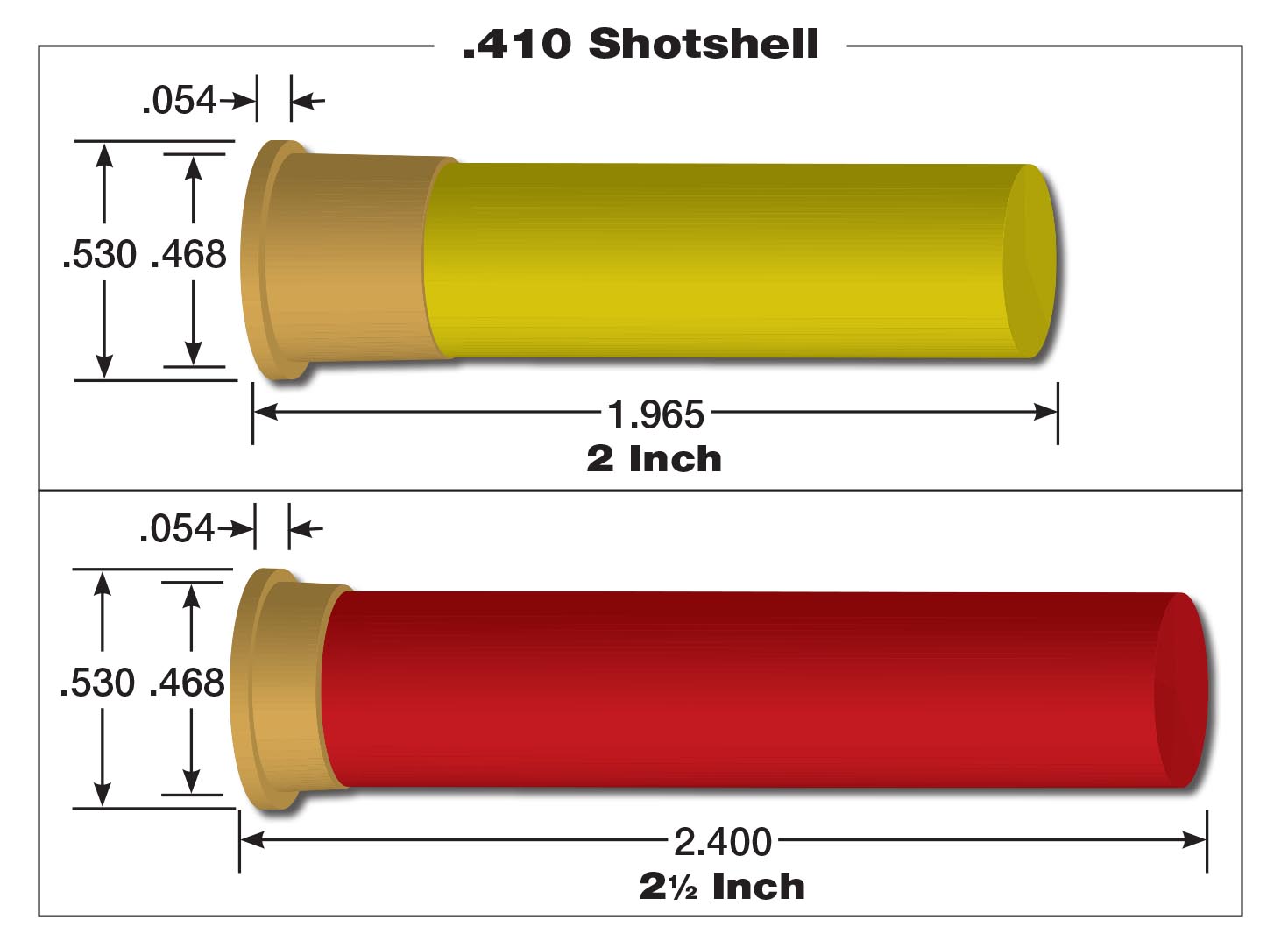
Fun like when Dad gave me an old smoothbore .22 rimfire chambered for shot cartridges. Early one summer morning, I was carrying it while walking around a marshy area in farmland behind our house. Flying everywhere were dragonflies with 4-inch wingspans. Here was a target for the tiny shot cartridge! Jump-shooting the bugs when they lit on a weed was great fun.
Soon the daylight was fading and new targets appeared. First just a few bats, then hundreds. Because of their erratic flight, the only thing successful was spot-shooting, again pure fun. Crumpling bats at that marsh remains a vivid memory almost 60 years later. That and Dads comment when he found out what I was doing: “Just don’t cook and eat any, they’re poison.” I hadn’t thought of that yet!
Perhaps to get my mind off bats, Dad soon brought home a funny-looking single shot and several boxes of dirty greenishbrown paper cartridges. They looked like my cousins .410s but were only 2 inches long. This was my introduction to the “European .410” with cases head stamped “12mm.” While superior to the . 22 shot cartridge, it would barely kill sitting barn pigeons at 20 yards. Wing shooting was difficult due to the heavy trigger pull. The only thing I remember shooting with it was a few meadowlarks off fence posts because a crazy friend of mine read they were good cooked over an open fire. Well ... yes they are!
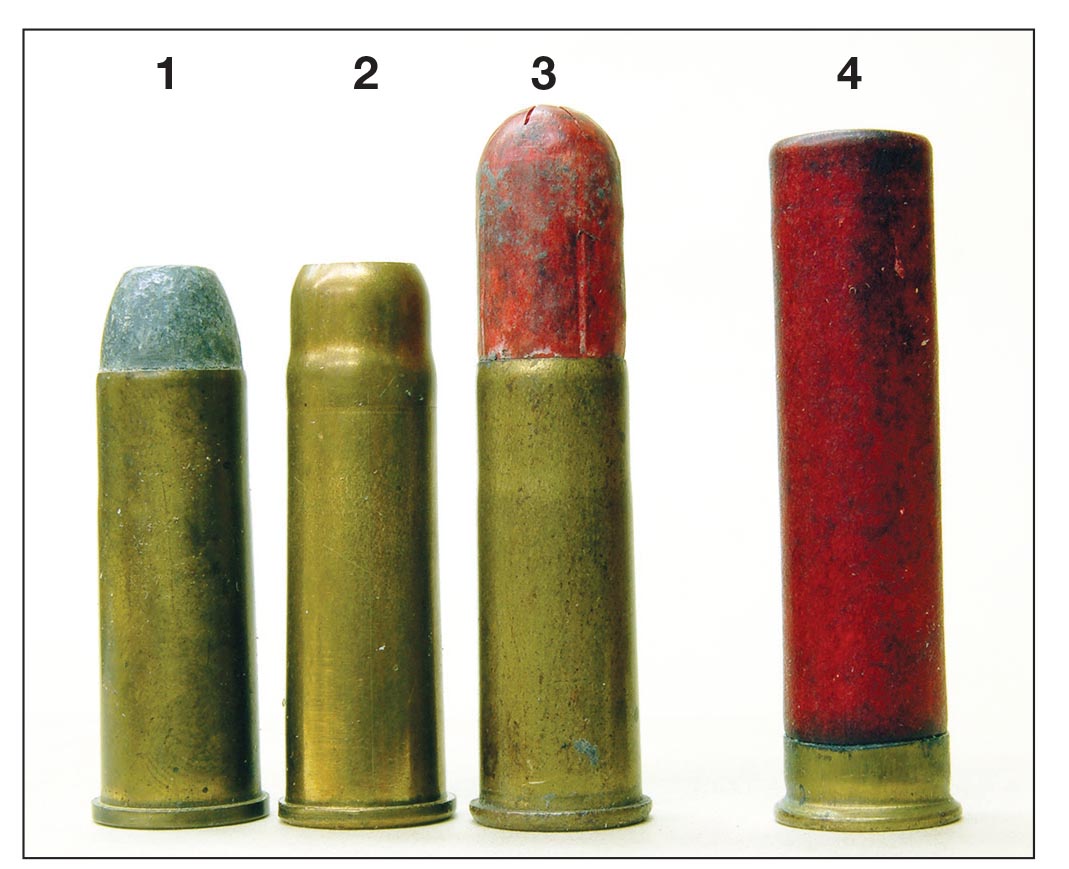
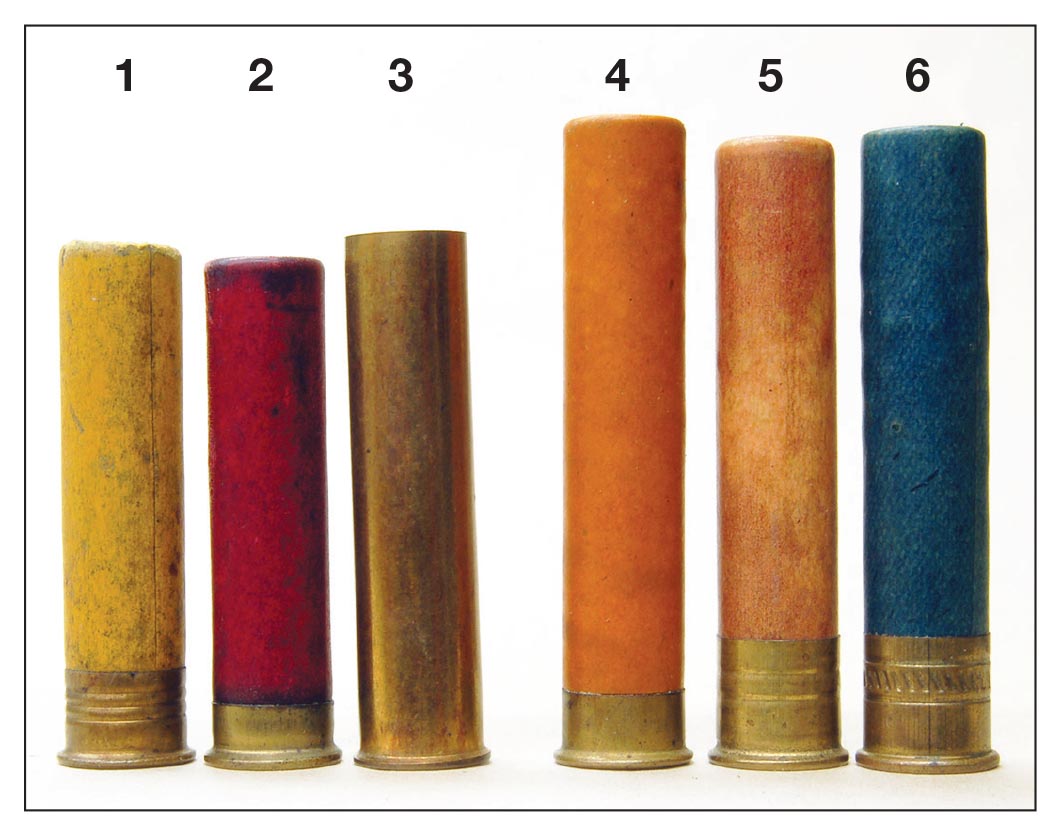
The largest French cane gun cartridge is listed as 12mm Dumonthier, aka 11.85x44.9R, dated roughly 1890-96. This cartridge was loaded with both shot and round ball. A robber would certainly be discouraged by such a thing if applied at only a few feet!
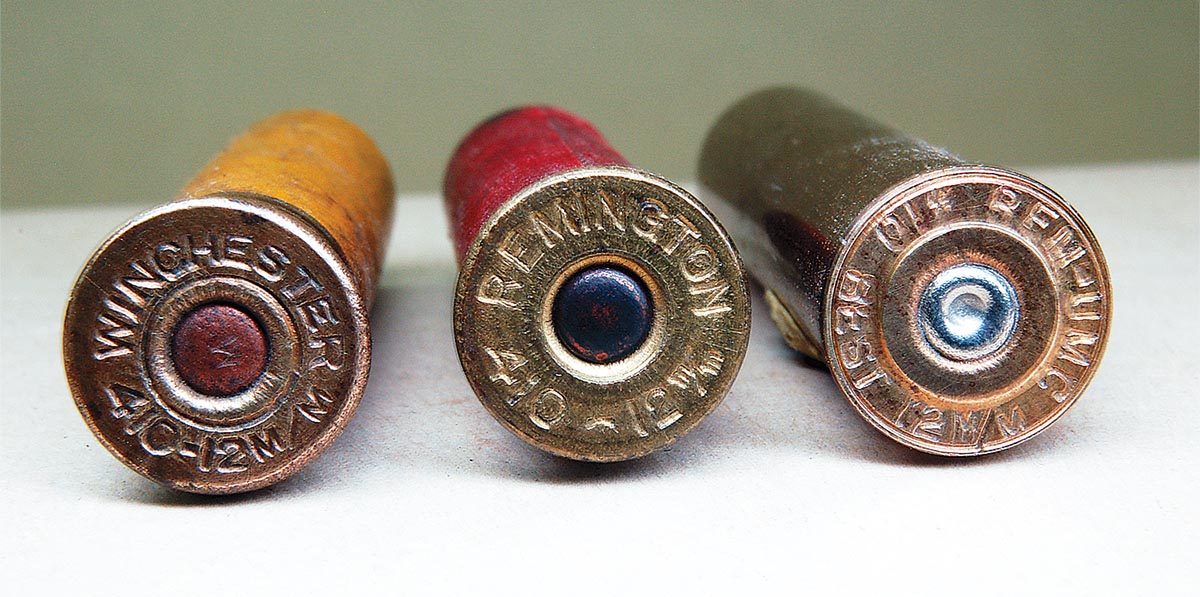
Most perplexing is where the numbers .410 and 12mm come from. Since barrels are smoothbore the 12mm should indicate bore diameter, but 12mm equals .472 inch, and the earlier mentioned French round of 11.85mm equals .467 inch. Both are a long way from .410-inch bore diameter of all such guns I have measured. However, the 12mm comes close to the outside diameter of loaded ammunition. Some people insist the old 44XL shotshell is the origin of the .410, but the 12mm and British .410 ammunition clearly predate it.
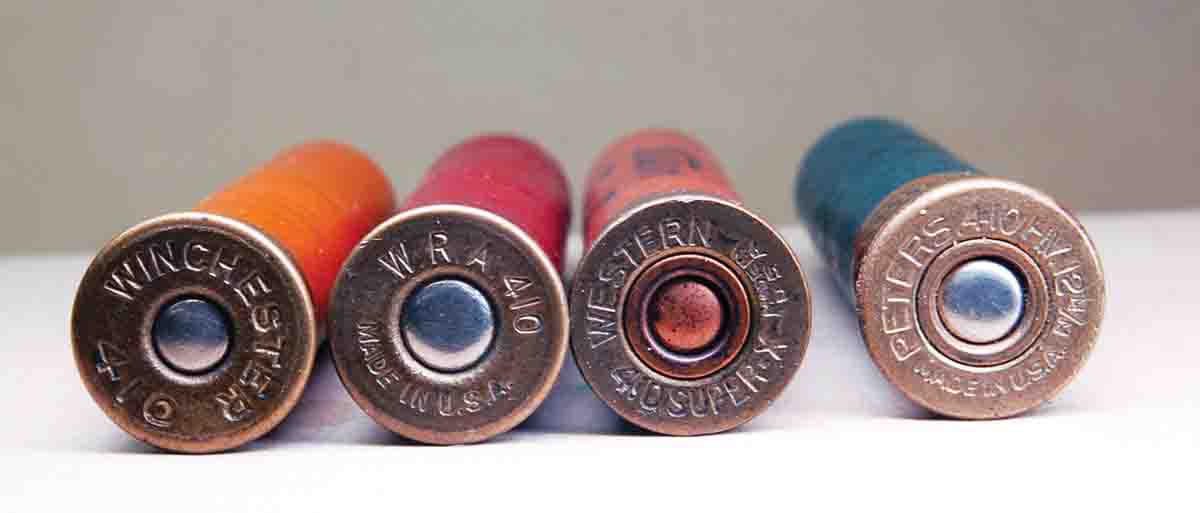
Cane guns were not popular in the U.S. with revolvers being favored for self-defense. There were a few cheap single shots in 12mm/.410 2-inch made in the U.S. and imported before World War I. They are seldom seen today because if used much, they quickly wore out. These guns (like mine), were called “garden guns” in Europe and Britain. Supposedly to keep birds and hungry little mammals out of the beans and radishes, they were probably more noisemakers than anything else.
In the U.S., Winchester listed its 2-inch .410 (also called 12mm) in 1916 in its yellow paper REPEATER case holding a 3⁄10-ounce shot charge. The 2½-inch shell was added in 1920, along with a couple new Winchester guns to fire it. This round held 3⁄8 of an ounce of shot. By 1925, a 1⁄5-ounce round-ball was available in both case lengths. The 2-inch case was gone in 1931.
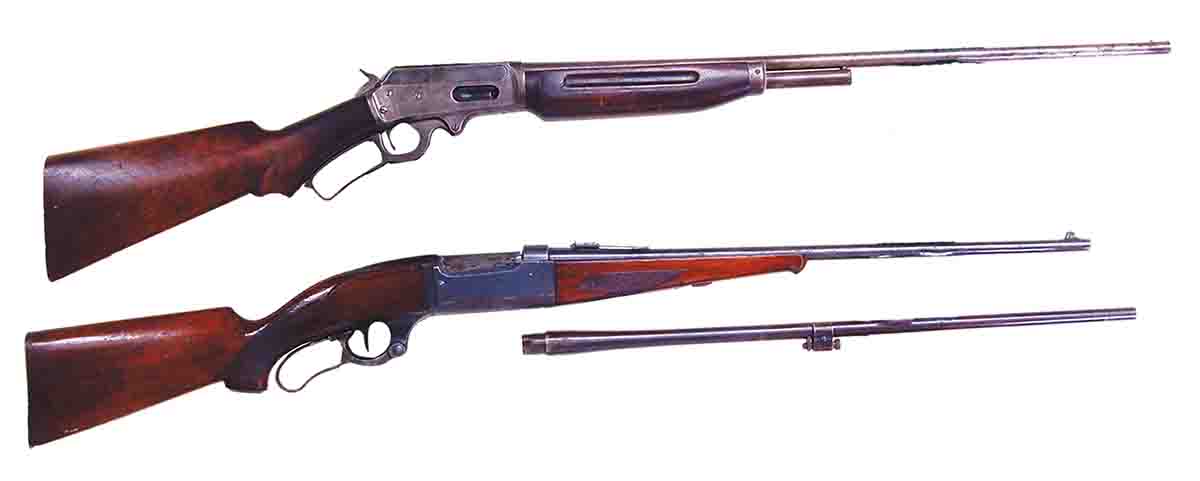
Skeet shooting saved the 2½-inch .410 in the 1930s. Ranges to the targets were both close and well-known. Good scores could be shot with the roll-crimped shells of the time. It was a challenge (fun) that many shooters enjoyed.
The little round’s one loading remained unchanged for years with smokeless powder pushing a 3⁄8-ounce shot charge in sizes No. 10 to No. 4. This and its later ½-ounce shot load are no doubt responsible for more wounded and lost game per shot fired than any other shotshell ever known. Adults thought it was a real shotgun and gave it to kids to hunt with because of low recoil and shells that are (were) 25 percent cheaper than 20 gauge loads. Many hunters still think this way.
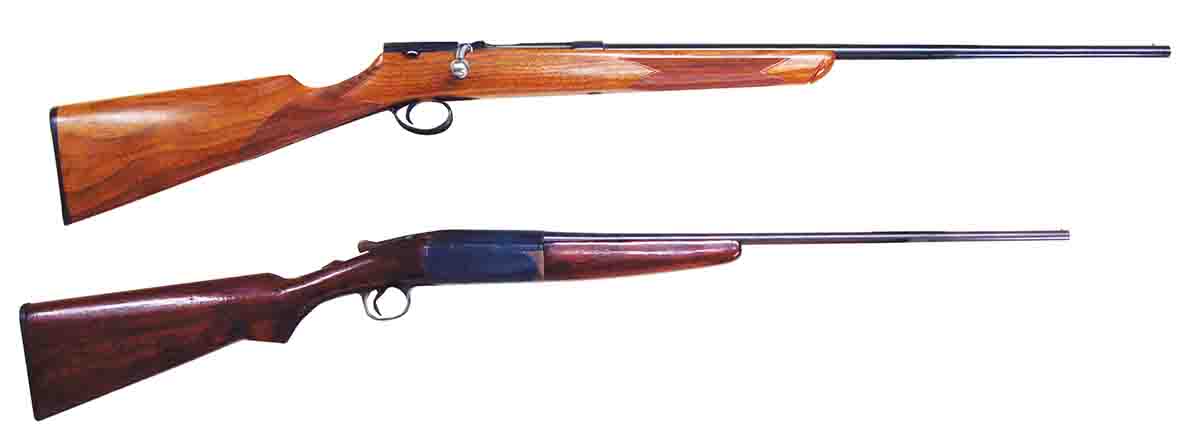
It is safe to say the 2½-inch .410 will last as long as the clay target games because it is great fun. As a hunting round, it is only for those who own quality guns and have patterned them enough to know exactly where that pattern becomes too thin to be effective, as well as exactly where their gun puts that pattern. Being a faultless judge of range to within a couple yards is also required. Only experts need apply.
Next time, we will look at the mystery that is the 3-inch .410 shotshell. What did its designers hope to accomplish? Was it just a promotion for a new shotgun? Something different? Stranger things have happened.


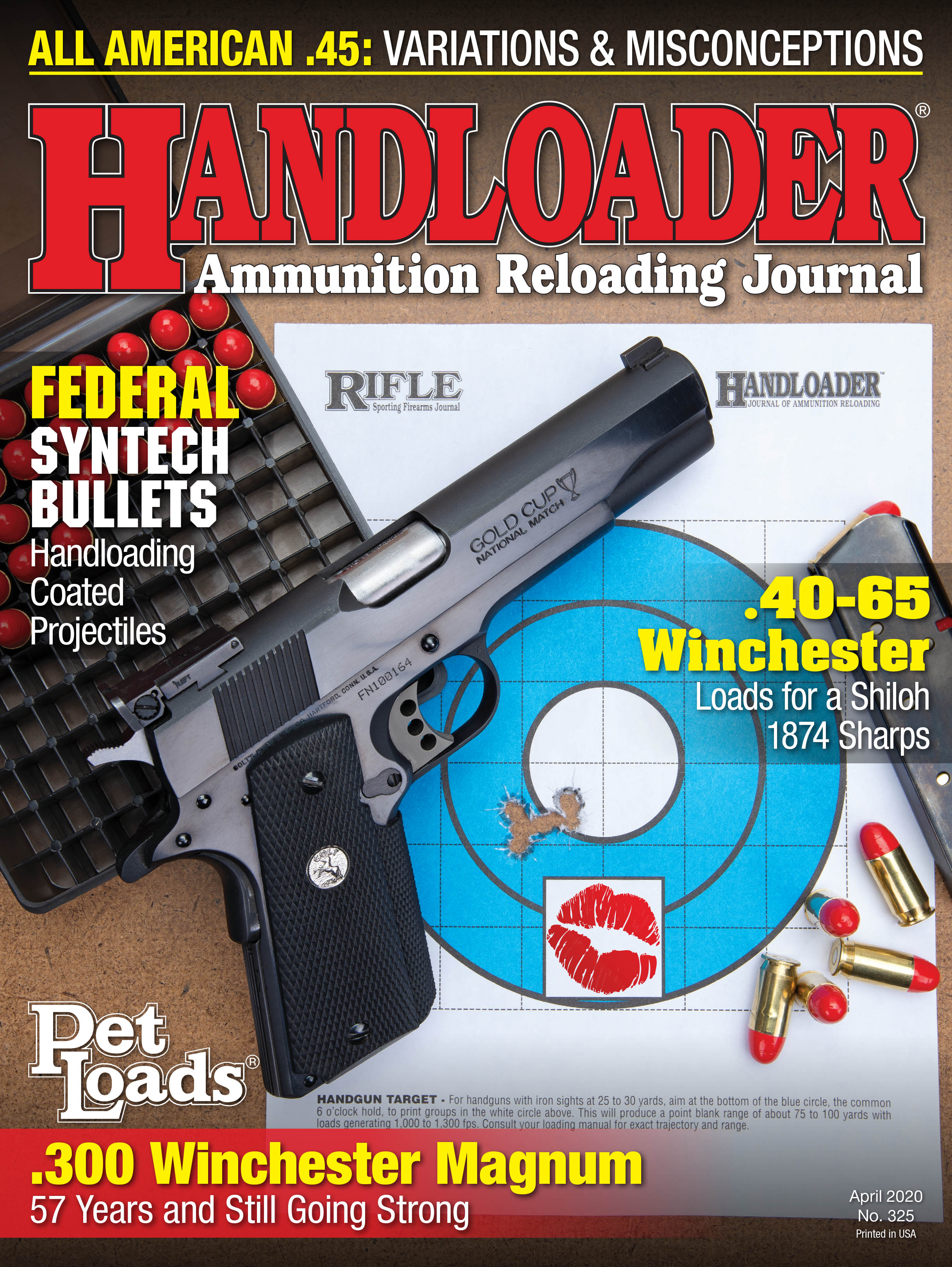
.jpg)